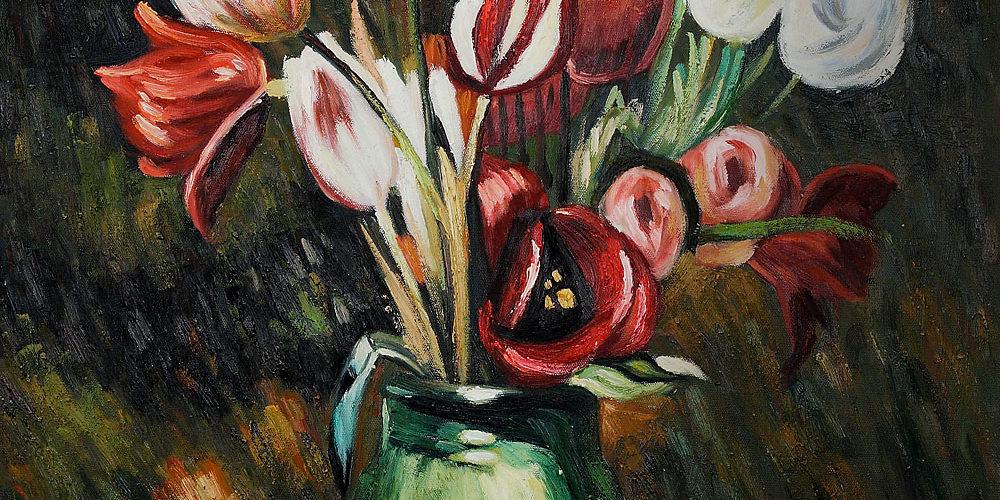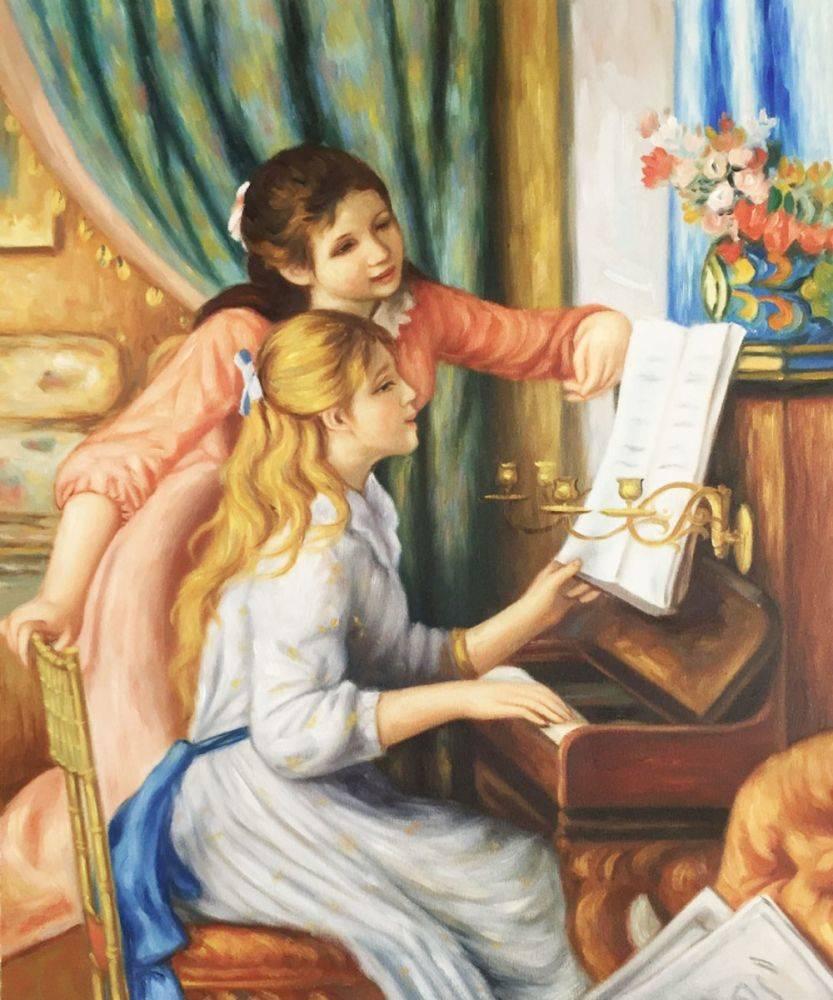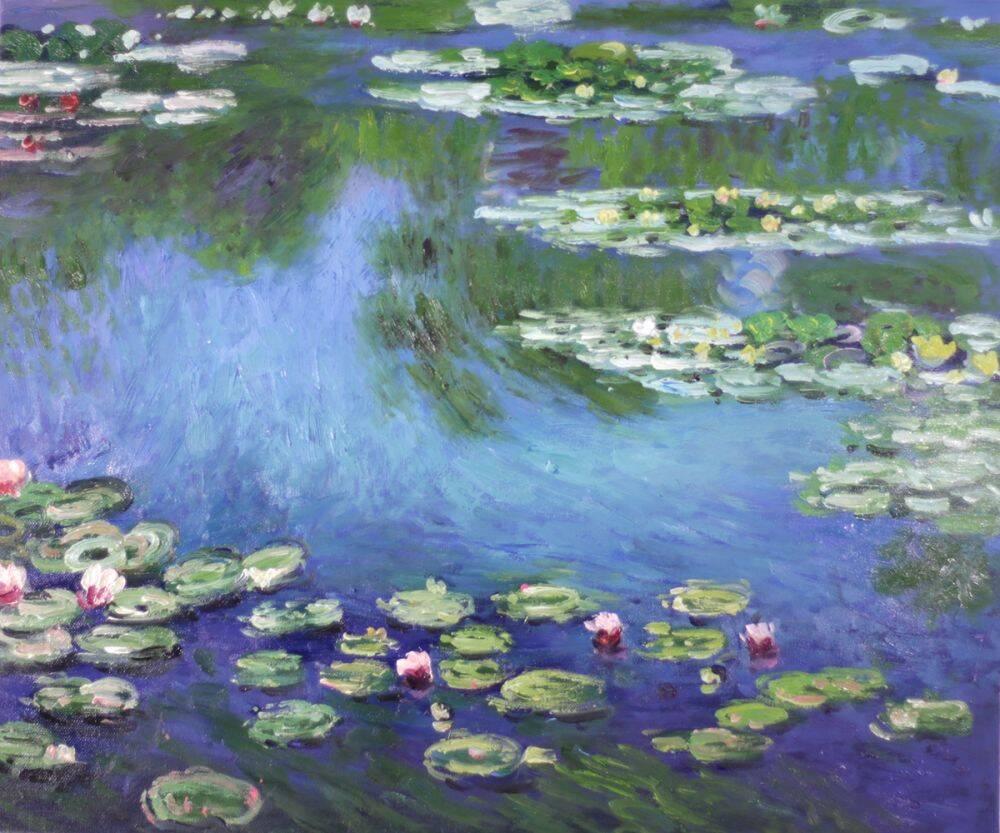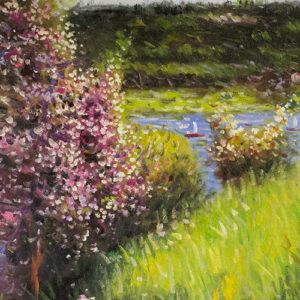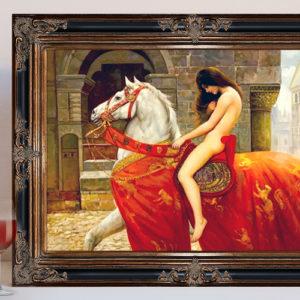Art & Decor Trends
Art Reflections
Spring Blooms in Art: The Symbol of Birth & Rebirth
No Spring garden or scene is complete without the bloom of flowers: Crocuses, Hyacinths, Daffodils, Tulips, Irises, Lilacs and Lilies form a carnival of colors and shades: purples, pinks, yellows, striated, reds, whites, and everything in between. Aromatic gems that calm the soul and tantalize the senses.
Fresh blooms play a major role in springtime celebrations from March-May. From cross-cultural Spring festivals, to Passover, to Easter through Mother’s Day, flowers are the favorite gift to give and the favored focal point on any celebrant’s table or home.
For the Persians, New Year – Nowruz (meaning “New Day”) – falls on the Vernal Equinox. Still celebrated by Persians worldwide, it’s a time of celebration (lasting twelve days), visitation and reflection. Before the celebration, Persians deep clean their home, banishing grime and dust and darkness, as well as purchasing new clothes and fresh flowers – preferring tulips and hyacinths over all others. Much like the traditional Western New Year celebrated on January 1, Nowruz celebrants believe that what one does on New Year’s Day impacts the rest of the year.
The Nowruz celebration is fascinating, steeped in symbolism and in ways that are rooted in ancient beliefs. The original Nowruz table (based in the ancient Zoroastrian religion) had 7 items displayed that corresponded with Nature: the Apple (Earth); a Mirror (Sky); Candles (Fire); Rose water (Water); Goldfish (Animals); Wheat or barley sprouts (Plants), and Colored or painted Eggs (Humans and fertility). It’s a beautiful and meaningful way in which to celebrate a new year – and Spring. It’s a time for new beginnings, new dreams, and a time to envision one’s goals for the year.
Spring’s early bloomers consisting of crocuses (Spring’s heralds), hyacinths (the most fragrant), daffodils (the brightest), irises (the most beautiful), and tulips (the most popular) grow from bulbs. It takes careful planning and patience, as well as perfect timing to see these flowers in Spring. Bulbs need to be planted three to four weeks before the first frost. Six months later, as the Spring sun warms the ground, small green tips break through Winter-weary dirt as we await the first bloom of color.
 Renoir’s Tulips in a Vase is perhaps one of the most exquisite celebrations of beauty and life. His still life subjects – especially the bouquets of flowers – are rich and vibrant, with a depth of connection unparalleled in his Impressionist contemporaries.
Renoir’s Tulips in a Vase is perhaps one of the most exquisite celebrations of beauty and life. His still life subjects – especially the bouquets of flowers – are rich and vibrant, with a depth of connection unparalleled in his Impressionist contemporaries.
Tulips, along with their Crocus companions, are heralds of Spring. Tulips, in particular, symbolize eternal love and life, returning year after year to grace the Spring garden. It is one of the most recognized, most beloved flowers in the world. Each color represents something different. For example, white symbolizes newness, purity, and heaven; pink stands for affection and red declares true love.
By understanding the meaning behind the color and the flower, the one who gazes upon Tulips in a Vase instantly knows the feeling behind the piece and what Renoir sought to convey: perfect and pure, true love.
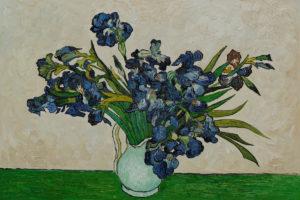 Along with tulips, irises are among the most fragrant – and vivid – Spring blooms. Van Gogh’s Irises is a study in hope and the renewal anchored in a psychic rebirth. His iris group of paintings was done while he was at the asylum at Saint-Remy. In this particular painting, the Irises are connected to the Earth, blooming, vibrant and alive. The lone white iris adrift in a sea of indigo and violet hues, seem to symbolize a part of Heaven, one lone pinpoint of light. Himself, perhaps, breaking through darkness?
Along with tulips, irises are among the most fragrant – and vivid – Spring blooms. Van Gogh’s Irises is a study in hope and the renewal anchored in a psychic rebirth. His iris group of paintings was done while he was at the asylum at Saint-Remy. In this particular painting, the Irises are connected to the Earth, blooming, vibrant and alive. The lone white iris adrift in a sea of indigo and violet hues, seem to symbolize a part of Heaven, one lone pinpoint of light. Himself, perhaps, breaking through darkness?
The Iris represents faith, wisdom, and hope – and it’s a distinctly feminine flower. In Greek mythology, the goddess Iris was the rainbow, a messenger of the gods and companion guide who would carry the souls of women to the Elysian Fields. The flower was a symbol of one beloved to another. Also associated with the Virgin Mary, the petals of the iris represented the Trinity, and the spear-like foliage the sorrows she suffered.
For more Floral oil paintings, visit our vast Floral Art Gallery.
